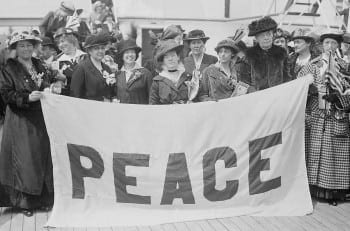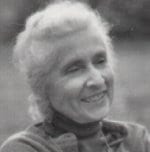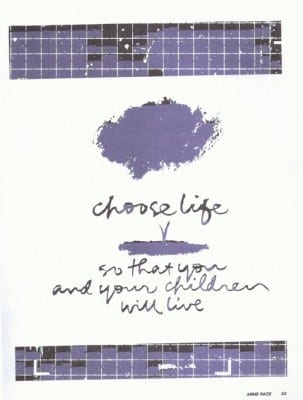=By= Murray Polner

“Before one more mother’s child is lost.”
–Cindy Sheehan, whose son was killed in the Bush-Cheney-Neocon war in Iraq.
[dropcap]M[/dropcap]any women have always played crucial roles supporting, worrying about, and grieving for their family members while others have actively opposed our historic addiction for war. Some of the women I write about here are fairly well-known but others are not.
Naomi Goodman
Naomi Goodman. My wife Louise says we can only hope to grasp glimpses of another’s life, especially their hidden, private inner life. Naomi Goodman, my friend and colleague, died at age 85 in 2005 and I delivered a eulogy at her memorial service. But I think Louise was right about Naomi, whose public life was well known in feminist and anti-war, anti-draft circles but little was known about her innermost feelings until her poetry, about which I knew nothing were published soon after she died.
I first met her during the Vietnam years when she was serving with the National Council to Repeal the Draft, a coalition of left and right groups trying to end conscription, which only whetted the appetite of our resident warmakers. I stopped by to ask her about some young men—really, boys– I was draft counseling. We then went to a nearby luncheonette and I told her that I’d been a pacifist since the day I was honorably discharged from the army. I had nothing against the army or my fellow soldiers only the psychopaths in Washington and elsewhere who loved war so long as they and their kids never served. I also told her I was looking for a Jewish group which closely reflected my views and which counseled Jew and non-Jews alike.
I learned she was “an active pacifist and feminist historian,” as someone described her to me, and that she was involved with the Jewish Peace Fellowship, a group founded in 1941 to defend the interests and rights of WWII Jewish C0s who had been condemned by most American Jewish organizations and often abandoned by their families. The JPF was committed to active nonviolence, drawing on the Torah and the Talmud and Jewish ideals and experience which offered inspiration for a nonviolent way of life. Martin Buber, Judah Magnes and Rabbis Abraham Joshua Heschel, Abraham Cronbach, Isidor Hoffman and Leo Baeck, Berlin’s last rabbi before the cattle cars arrived.
For many years she was the JPF’s president, where she favored a two-state solution for the interminable, intractable Israeli-Palestinian conflict. She and I were invited to Brandeis University and schools and synagogues and churches to present our views. We co-edited two books, “The Challenge of Shalom: The Jewish Tradition of Peace and Justice” and “Nonviolent Activist: The Heart & Mind of Edward Feder.” She and JPF member Henry Schwarzschild worked against the death penalty and she always fought for political and peaceful solutions. During Reagan’s undeclared war in Central America, when the former actor was calling Central American murderers “freedom fighters,” she would only buy coffee gown in Nicaragua. More importantly, her friends came in all skin colors.
Outwardly quiet, unassuming, she was never intimidated and insisted that, while American Jews need to maintain their ties with Israel the plight of Palestinians could not be dismissed. My wife and I and hundreds of thousands of others marched with her in demonstrations and parades protesting our many wars, Naomi always proudly carrying JPF’s banner. Elsewhere, she stood for “Pacifism, not Passivism—Feminism Not Pseudo-Machismo.” She also took time to celebrate the memory of Jeanette Rankin, the sadly forgotten Republican Montana pacifist congresswoman who, together with 56 members of Congress, opposed entry into WWI and later stood alone against war with Japan.
Percival, her loving husband, was an eminent architect of synagogues and community centers across the U.S., the designer of NY’s Jewish Museum, and a pioneering and daring urban planner who, with his polymath brother Paul, addressed the ecological and human needs of ordinary women and men in their book “Communitas.” Yet I also remember her telling me that in all the years of meetings and parties and engagements with the prominent primarily male intellectuals she interacted with, no one ever asked for her opinion.
But of course she had plenty of opinions. As a member of the Institute for Research in History she published “Images of Women in Judaism: Male Control of Women’s Reproductive Functions as documented in the 0ld Testament,” where she argued that Hebrew Scriptures considered the main function of women to be producing children (Naomi had a son and daughter). Women, however, were powerless, since the males developed such controls to fortify their male-only religious system.
In her friend Taylor Stoehr’s preface to Naomi’s slim volume, “On Borrowed Times; Poems of Two Centuries,” he wrote that superficially they seemed obsessed with death and despair and the wrench of loss and subsequent loneliness. But, Stoehr shrewdly added, “Naomi has not spent her life brooding.” Peace, freedom for political prisoners, racial justice, women’s rights, biblical scholarship (she even co-edited a cookbook, “The Good Book Cook Book”) her poems remind us of “the courage necessary to affirm life and humanity in world full of suffering and death.”
Two of Naomi’s poems that illustrate her rich life:
“A Saint Sat in Our Living Room” (after a visit by Thich Nanh Hanh, “self-exiled leader of Vietnam’s pacifist Buddhists,” to her West 77th Street apartment in Manhattan.
Squirming on the foam-cushioned, comfort-angled chair
And said: You have many things of beauty
He spoke without envy
He spoke without judgment
And left me with guilt.
Guilt for the curve of the tropical palm leaf
Growing greenly in the artificial heat.
Guilt for the life, the extras, the leisure
That permitted the creation of art objects
Amid the improbable plants
Sixteen stories above the dirty street
I was embarrassed for our ease.
*******
And for all women:
“Women Must Live Longer”
To have equal time
Since they have so much more to do;
Years of bearing,
Years of caring for the children
(Birth is not an equally opportunity employer),
And for the others:
Fathers, sisters, brothers, friends,
Husbands,nieces, nephews,cousins;
They haven’t spent time in dailyness,
Drowning in the details
Of others’ lives,
Mothers have to live longer
To have the same time men have
For themselves.
So….

Anti-Vietnam War poster by women’s peace group
Sister Megan Rice. After spending two years in prison for entering and defacing a nuclear facility, 85 year old Sister Megan Rice, a nun of the Roman Catholic Society of the Holy Child and her co-defendants, army veterans Michael Walli, 66, and Greg Boertje-0bed, 59, were released in May 2015 by 0rder of the U.S. Court of Appeals for the Sixth Circuit.
And their crime? Cutting a hole in a barbed wire fence in one of 0ak Ridge’s ultra-secret national security sites on July 28, 2012, and then crossing into sacred, prohibited ground, hammering on the Highly Enriched Uranium Material facility and spraying some Biblical graffiti, leaving behind Isaiah’s subversive adage about beating swords into plowshares.
The trio were tried and found guilty in Knoxville and fined $52,053—which the government will obviously never collect since in all probability a nun, a house painter and an unemployed activist do not usually own stocks, bonds or have a hedge fund account.
Jim 0’Grady and I wrote “Disarmed and Dangerous,” a biography of Daniel and Philip Berrigan, and the Oak Ridge trio’s project was born of Phil’s idealistic Plowshares brainstorm, which flatly rejected the nuclear arms race. Since the early eighties and nineties some one hundred and women have hammered on and spray-painted MX missiles, Trident submarines, B-52 bombers and components of the strategic nuclear triads, sending lots of them to prison even as they were ignored by a distracted and apathetic nation.
During their federal trial in Knoxville the Judge said he hadn’t found the defendants “contrite.” Kathy Boylan, a longtime peace worker, testified on their behalf and alluded to the Holocaust, quoting Dorothy Day. “If we wouldn’t put people in gas chambers, why would we fling gas chambers at them?’ Interviewed after her release, Sister Megan Rice told the NY Times that should the feds appeal the verdict and win, and she is returned to prison, “It would be an honor. Good Lord, what would be is better than to die in prison for the anti-nuclear cause?”
And a few more including Daddy Warbuck’s Women….
Maggie, Jill, Molly and Valentine. Inspired by the Berrigans and the Catonsville draft board raid (two of whom were women, Mary Moylan and Marjorie Melville), Maggie Geddes, Jill Boskey, Molly Finnegan and Valentine Green dubbed themselves ‘Women Against Daddy Warbucks” and raided a draft board in –of all places—Rockefeller Center, tearing up 1-A files and sending them to the head of Dow Chemical and General Lewis Hershey, director of Selective Service. As Jim 0’Grady and I wrote in “Disarmed and Dangerous,” they told the two very important men “they were holding in their hands a piece of someone else’s life. The fact that they were female was deliberate. It was the first shot of the modern female antiwar movement. The women were never punished since the investigators spent their time hunting for the men they believed had directed the women.”
Dorothy Day. Anarchist, pacifist, protestor against injustice, saving angel to the desperately poor and homeless, and co-founder of the Catholic Worker, she is now being considered for Sainthood by the Catholic Church. She was initially troubled by the raids, unhappy about the secrecy in which they were hatched and its potential for violence. But in the end she praised Catonsville and the other raids as “an act of liturgy…an act of prayer,” adding, “I have to admire all those who have been participating… they are laying down their lives and going to prison.”
Molly Rush. A married mother of six children and a Grandma too, as well as a member of Phil Berrigan’s Plowshares movement. She pounded on a warhead nose cone in GE’s nuclear weapons factory and was sent to prison. Molly co-founded the Thomas Merton Center in Pittsburgh dedicated to raising interest in social justice, militarism, poverty, the rights of working people and of course nuclear arsenals. In an article she later wrote for Christianity and Crisis she explained: “It is not in nuclear weapons that I place my trust. It is not in that world of blindness and fear and hatred where I place my trust.”
Barbara Sonneborn. I never met her but Jeff Hurvitz, her husband, was killed in Vietnam in 1968. In her exquisite and poignant 1999 film “Regret to Inform,” she portrayed the anguish of war widows like herself, Vietnamese and American. Of her film she said, “Making this has been Jeff’s gift to me. It has expanded my understanding of sorrow and suffering, of love and joy. I want people to see war differently than they’ve seen it before .I want them to look war in the face, to ask themselves, ‘Am I going to allow this to happen ever again’? I want people to so deeply realize the humanity of other human beings that they won’t be able to kill them.”
Mr. and Mrs. X. For my book “When Can I Come Home?” I spent time with parents whose 23 year old son had fled to Canada rather than serve in a war he despised. His mother, Mrs. X., was completely sympathetic with her son’s decision. She told me how the draft had brought so much misery to families she had since encountered, people who had never spent much time worrying how a distant foreign policy elite’s policies might possibly affect their kids. Congress Quarterly would later report that only fourteen House and Senate members had a son or grandson on active military duty.
Rivka Polner. Mom knew best. She had lived through vicious pogroms and the post-WWI Russian-Polish-Ukrainian civil war and was permanently scarred by her experiences. One day, in 1944, after trying to comfort our next door neighbor whose son had been killed somewhere in Europe, she turned to me and said she could never support any war and hoped I would someday feel the same way too. “Only plain people like us get hurt.”
 Contributing Editor, Murray Polner wrote “No Victory Parades: The Return of the Vietnam Veteran“; “When Can I Come Home,” about draft evaders during the Vietnam era; co-authored with Jim O’Grady, “Disarmed and Dangerous,” a dual biography of Dan and Phil Berrigan; and most recently, with Thomas Woods,Jr., ” We Who Dared to Say No to War.” He is the senior book review editor for the History News Network.
Contributing Editor, Murray Polner wrote “No Victory Parades: The Return of the Vietnam Veteran“; “When Can I Come Home,” about draft evaders during the Vietnam era; co-authored with Jim O’Grady, “Disarmed and Dangerous,” a dual biography of Dan and Phil Berrigan; and most recently, with Thomas Woods,Jr., ” We Who Dared to Say No to War.” He is the senior book review editor for the History News Network.
Lead Graphic: 1915 Womens International Peace Congress, and Women peace activists & gravestones in Montreux, at Geneva 2 peace talks for Syria. Oxfam. (CC BY-NC-ND 2.0)
Note to Commenters
Due to severe hacking attacks in the recent past that brought our site down for up to 11 days with considerable loss of circulation, we exercise extreme caution in the comments we publish, as the comment box has been one of the main arteries to inject malicious code. Because of that comments may not appear immediately, but rest assured that if you are a legitimate commenter your opinion will be published within 24 hours. If your comment fails to appear, and you wish to reach us directly, send us a mail at: editor@greanvillepost.com
We apologize for this inconvenience.
 Nauseated by the
Nauseated by the
vile corporate media?
Had enough of their lies, escapism,
omissions and relentless manipulation?
Send a donation to
The Greanville Post–or
But be sure to support YOUR media.
If you don’t, who will?



Thank you for writing this. The contributions of women at the forefronts of social and political movements are routinely written out of historical narratives in favor of men’s. Your friend Naomi Goodman’s comment that “in all the years of meetings and parties and engagements with the prominent primarily male intellectuals she interacted with, no one ever asked for her opinion” is telling in this regard, as is “The women were never punished since the investigators spent their time hunting for the men they believed had directed the women.” Women have always been—and will continue to be—forces to be reckoned with,… Read more »